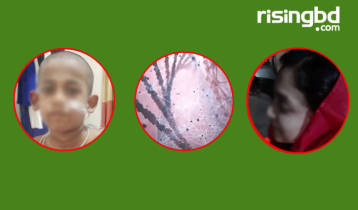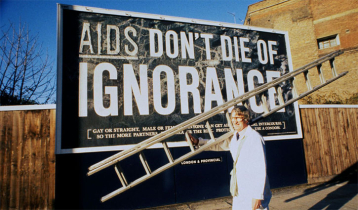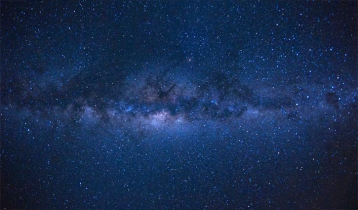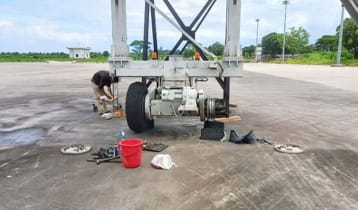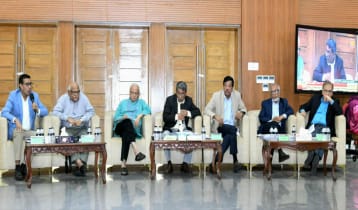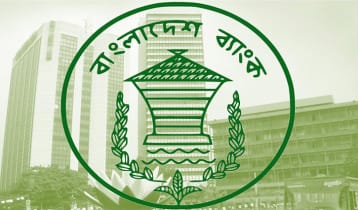NASA reveals 5 asteroids to pass Earth
4 || risingbd.com

Risingbd Desk: It is a scene we all dread – an enormous space rock colliding with Earth, causing widespread chaos and destruction.
And experts have warned that the dreaded scenario could become a reality this year.A leading astronomer from Nasa has tweeted a list of five known asteroids expected to fly scarily close to Earth within the coming year.
Ron Baalke, a space explorer at Nasa's Jet Propulsion Laboratory in Pasadena, California tweeted the worrying predictions.
He said: 'A list of known asteroid close approaches to Earth - less than five Lunar Distance - within the coming year', along with a table detailing the five asteroids.
According to Mr Baalke, the first close encounter will come on July 23, when Object 2017 BS5, which is predicted to have a diameter of 40-90 metres will come within 3.15 lunar distances (752,937 miles) with Earth.
The most worryingly close encounter is predicted to come on October 12, when Object 2012 TC4 will come within just 0.15 lunar distances (35,828 miles) with Earth, although thankfully the asteroid will only be 12-27 metres in diameter.
A further three close encounters will occur on December 3rd, February 24th, and April 2nd.
And while Mr Baalke has highlighted those five, there could be several other asteroids making close encounters with Earth.
In January, an asteroid as big as a bus came closer to Earth than the moon.
The object, dubbed 2017 FJ101, zoomed passed within 202,000 miles (325,087 km) of our planet.
For years scientists have been trying to work out how to deal with the threat of an asteroid, which could hit us with little or no warning.
The White House released an official document called the 'National Near-Earth Object Preparedness Strategy', describing the plan if a meteor or asteroid was to head our way, and it shows we are under-prepared.
The document 'seeks to improve our nation's preparedness to address the hazard of near-Earth object (NEO) impacts by enhancing the integration of existing national and international assets and adding important capabilities that are currently lacking.'
NEOs are asteroids or comets that have an orbit that brings them near or into Earth's orbit.
If one of these was to zoom towards Earth in the future, it would not be the first time.
A 56 foot (17-metre) meteor that struck Chelyabinsk, Russia, in 2013, injured more than 1,000 people came with no warning.
This is why one of the strategies outlined in the document is to improve on Nasa's methods of detecting NEOs before it is too late.
In seven main goals described in the document, the White House also focuses on improving modelling and predicting where NEOs will travel.
The US also plans to improve its emergency alert systems and invest in hi-tech space probes that could annihilate threats.
The document notes, as with other low-probability, high-consequence hazards, 'potential NEO impacts pose a significant and complex challenge.'
'This Strategy is a step in addressing the myriad challenges of managing and reducing the risks posed by both large and small NEOs,' it claims.
At the end of last year, Nasa warned we are not prepared for an asteroid strike.
Dr Joseph Nuth, a researcher at Nasa's Goddard Space Flight Centre in Maryland was speaking at the annual meeting of the American Geophysical Union in December.
He said: 'The biggest problem, basically, is there's not a hell of a lot we can do about it at the moment.'
While dangerous asteroids and comets rarely hit Earth, Dr Nuth warned that the threat was always there.
He said: 'They are the extinction-level events, things like dinosaur killers, they're 50 to 60 million years apart, essentially.
'You could say, of course, we're due, but it's a random course at that point.'
Nasa is working on a series of missions including an asteroid redirect mission, that will see a robotic spaceship visit an asteroid to create an orbiting base for astronauts.
The space agency has a team of scientists who are always watching the skies for potential threats.
Source: The Mail
risingbd/May 25, 2017/Mukul
risingbd.com



